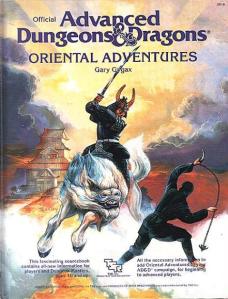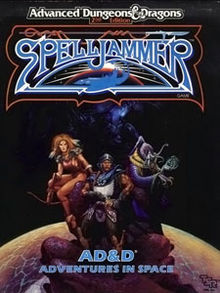Once upon a time, the d20 was optional.
Dungeons & Dragons got its start as an add-on to the miniatures wargame, Chainmail. That much, I had known for years. What I didn’t know before reading Jason Vey’s OSR effort, Spellcraft & Swordplay Deluxe Edition, is that the core dice mechanic almost all players of almost every edition associate with the name Dungeons & Dragons, the very system of “weird” dice that defined the game experience for generations of role-players, began as an optional task resolution method in the original D&D supplements. Chainmail relied only on d6s, apparently… and so did the first iteration of Dungeons & Dragons.
Spellcraft & Swordplay seeks to emulate the original D&D experience by doing the same thing: dispensing with all the “weird” dice and taking the hobby back to its conventional d6 roots. And by doing so, it has revolutionized my own vision of the perennial question: what is D&D?
When you begin reading S&S, it seems instantly familiar: the same six ability scores you know and love, the four basic core classes (warrior, priest, wizard, thief), the expected character races (human, dwarf, elf, halfling). But within minutes, everything goes askew. There are d6s galore here, and no other types of dice.
The core task resolution mechanic is 2d6 +/- modifiers vs. a target number of 11 or higher. An unmodified 12 is an automatic, critical success, and an unmodified roll of 2 is an automatic failure. All weapons do a d6 damage, modified by a character’s ability scores. All creatures and classes roll Xd6 for hit points, modified in various ways.
And then there’s combat. Forget Base Attack Bonus or THAC0. S&S reverts us all the way back to the Weapon Types vs. Armor system, in which a table of weapons is cross-referenced against a target’s Armor Class to produce the number a character needs to roll or beat in order to successfully strike his opponent. Like more modern games, S&S uses an ascending AC template with higher AC being better. But it begins the scale at 1, and goes up through 8, with some particularly powerful opponents imposing a negative penalty on the character’s to-hit roll. Thus, an ancient dragon has AC 8 -6, meaning everyone attacking it has to subtract 6 from their to-hit roll before checking the weapons vs. AC table.
There are lots of other little bells & whistles to help distinguish characters from one another, most of them handled with ability checks (2d6 + ability score modifier +/- difficulty modifiers vs. target 11+), and/or class- and level-based bonuses.
But it turns out that the excision of “weird” dice is just an appetizer before the real surprise in S&S: the replacement of a Vancian, fire-and-forget magic system with a skill-check-based one. All spellcasters — wizards, priests, and their “elite path” sub-classes (which I’ll get to in a moment) — must roll 2d6 each time they cast a spell, modified by either Charisma, Intelligence, or Wisdom bonuses, to determine when (or whether) the spell goes off. A great roll lets the spell go off the same round it’s cast, an average roll fires the spell off in the following round, and a terrible roll means the spell doesn’t go off at all and the caster forgets it. The game still uses spell slots per level, but so long as the caster studies or prays for one hour each morning, she retains all her spells in memory perpetually and may cast them any time she desires, provided there’s an available open slot.
Suddenly, low-level casters aren’t one-trick ponies anymore. I like this, a lot; it is, honestly, the point that finally sold me on the game.
Oh, and about those “elite paths”: each of the four base classes contains one or more of them, and they are essentially subclasses in the style of 1st and 2nd edition AD&D. To qualify for them, a character must have exceptional scores in one or more relevant abilities, etc. You know the story here. Warriors have paladin and ranger as elite paths, wizards have necromancer instead of illusionist (a bold choice!), priests have druid, and thieves get assassin. The elite paths get all the abilities of their base class plus unique abilities of their own, but must earn 10% extra experience per level to advance.
Knowing that the game was based, in part, on the old Chainmail rules, I expected to dislike Spellcraft & Swordplay. But I was pleasantly surprised to discover that it is now my favorite take on the OSR genre to date. It’s streamlined, easy to learn, economical, and best of all, evocative of an earlier time while still being grounded in modern innovations. It’s not so much a retro-clone or a nostalgia game, but its own entity, paying homage to the past without being limited to it.
And the art is, like the rules themselves, simple and evocative. Resembling medieval woodcuts, S&S art pieces conjure the courts of Arthur and Charlemagne, the antics of Robin Hood and his Merry Men, the legend of St. George and the dragon, the glory and tragedy of the Crusades.
Bravo to Jason Vey and Elf Lair Games. They’ve got a natural 12 on their hands.
HOW I’D USE IT: Did I just allude to chivalric settings? Well there you go. S&S will be my go-to rules for running a classic knights-errant campaign in the style of the Grail Quest or the courtly romances of the High Medieval. Its first supplement, Monstrous Mayhem, includes rules for duels, jousting, archery contests, and other medieval fairgrounds activity, which are all great ways for low-level characters to earn experience in thrilling contests without risking their lives (too much). I’m already envisioning a campaign that begins at a medieval fair, in which the PCs navigate courtly politics, contests of honor, and skullduggery in the shadows of kings and princes.

 like the ones I saw in The Bride With White Hair or A Chinese Ghost Story got me really excited about 1E OA.
like the ones I saw in The Bride With White Hair or A Chinese Ghost Story got me really excited about 1E OA. ame understands exactly what’s appealing about wuxia, and knows exactly how to render that appeal in the form of a D&D retro-clone without all the clutter of a complex proficiency, feat, or skill-point systems.
ame understands exactly what’s appealing about wuxia, and knows exactly how to render that appeal in the form of a D&D retro-clone without all the clutter of a complex proficiency, feat, or skill-point systems.

